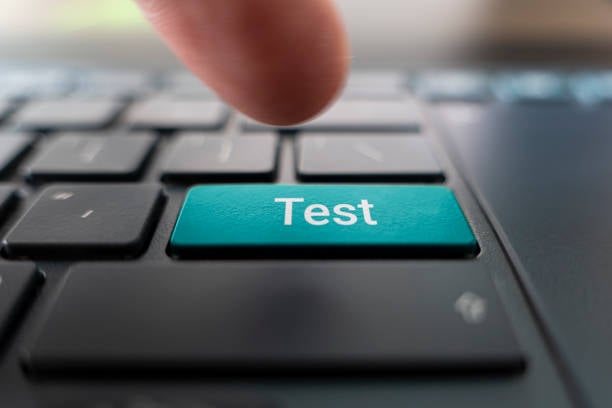
Have you ever encountered the following experience? You are having a conversation with someone, and midway through, they ask you a question you answered several minutes ago. Or worse yet, you seem to be having two very different conversations simultaneously.
If you have, you know all too well how frustrating and unproductive that can be. You end up repeating yourself over and over without making much progress, and both parties leave without feeling any sort of connection or understanding. Conversations like this are increasingly frequent in our constantly distracted, multi-task-obsessed world. All too often we find ourselves with a scattered mind just trying to remember the point we plan on making once the other person stops talking, without taking the time to listen to what they are saying.
For UX researchers, this can be a trap. Since many of the most common user experience research methods are conversational, the ability to listen and understand feedback is essential to produce high-quality research results. This trap, listening without really listening, can get even the most seasoned researcher in trouble, especially during those busier times of the year when our minds are running in all sorts of directions. And it’s why active listening is such a valuable and necessary skill in the world of UX research.
Active listening transforms a conversation or a research session into a dynamic and engaging activity, rather than a choppy back-and-forth exchange. To be an active listener, a researcher must first and foremost listen to what the other participants in a session are saying. While listening, it is crucial to interpret the shared information in your own words. By putting what you have heard into your own words, you are beginning the process of internalizing the feedback that is being shared.
And then, when appropriate, you will want to paraphrase what you have heard to check for understanding. This approach allows you to offer meaningful reactions, feedback, and segues that demonstrate genuine comprehension, rather than merely reading from a script.
While all of that seems simple enough, active listening is a skill that takes continual practice. Here are a couple of tips and tricks to try out the next time you find yourself fielding a research session:
Brain dump or meditate before your session: One of the reasons that even the most experienced researchers find themselves struggling with active listening during a research session is a phenomenon that psychologists sometimes call our “monkey minds.” Human brains are often restless and can ping-pong back and forth from our daily worries and anxieties to our daily task lists, to upcoming deadlines at work or at home. Our brains rarely land in one spot for long, making it nearly impossible to focus on one idea, much less a conversation, for an extended period. Taking 10 minutes to meditate, go for a quick walk to clear your head, or write down all of the things on your mind before a session can help you enter the session with a clean slate. This allows you the mental bandwidth it takes to be a truly active listener.
Good old-fashioned paper and pen: Most of us lean heavily on technology for our jobs and for our personal lives. However, technology can also be the source of distractions that pull our focus away from our ability to actively listen. One way to mitigate the risk of getting distracted by notifications, calendar alerts, incoming emails, and headlines is to take notes on paper during a session. You might develop a short-hand style or strategy that allows you to take quick notes while still maintaining eye contact and engagement with your participant. Additionally, taking notes during a session will allow you to put what you are hearing into your own words, which is an essential piece of the active listening process and internalization of the message being heard.
Parrot-Talk: Just as parrots repeat what they hear, so should UX Researchers, just maybe in a bit more refined way. Once your participant has answered a question or shared feedback, it is often appropriate and helpful to say something to the effect of: “To make sure I am capturing your feedback accurately for our project team, I am going to repeat back my understanding of what you just said. Please correct me if any part of it is incorrect or if I am missing anything.” This not only allows you the opportunity to catch any possible misunderstandings, it also lets the participant know that you have been listening and truly care about what they have to say. It will encourage them to continue to share candid and verbose feedback as their session continues. Two important things to remember about parrot talk are: 1) to build in time for this when you are coordinating your studies. Don’t just schedule a session for the amount of time it takes to read the questions and give a quick answer. Instead, be sure to build in buffer time for any back and forth that might be necessary to come to an understanding about the participant’s feedback, and 2) be sure to take time if your summary is identified as inaccurate or incomplete. If you simply move on at this point, your participant will lose trust in you that you actually care about their feedback, AND you will have lost a golden opportunity to gather high-quality data for your study.
Acknowledge and then Redirect: Often conversational studies like user interviews can get off track. Participants, especially those who like to talk, can stray from the original question or give unsolicited feedback about something unrelated to the topic at hand. An active listener will be quick to acknowledge what the participant has said, let them know that they have noted it, and then be able to gracefully move the session back to the intended topic before the conversation gets too far off track.
Active listening shows empathy. It shows the participant that you are not just robotically reading off of a script. Most importantly, it makes it clear that you care about capturing their feedback in an accurate manner, seeking the whole picture rather than just a quick answer. As a researcher, this is important because it means you will have much more robust data to work with when it comes to analyzing results. Better results mean higher-quality deliverables, and ultimately, happier clients. So next time you find yourself in a session with a research participant, give these tips a try and see where it takes you. You might be surprised at just how much more you get out of your sessions.
Key Lime Interactive’s research team prides itself on being talented active listeners. Contact Key Lime for your research needs!







Comments
Add Comment